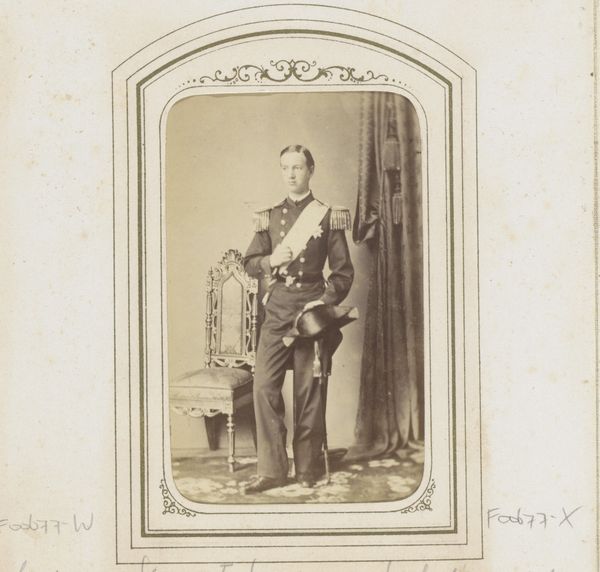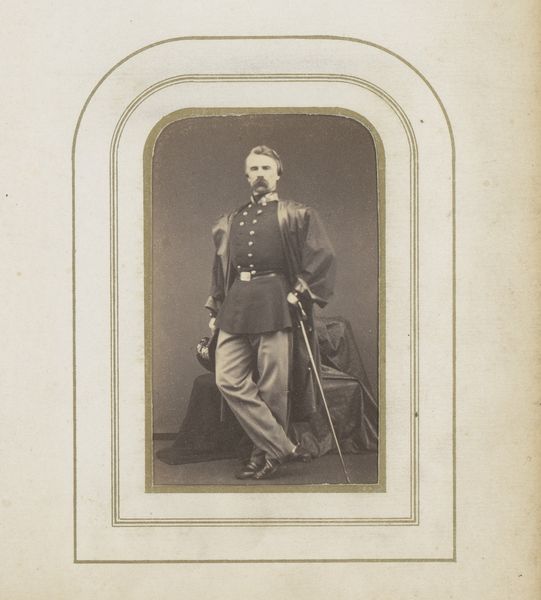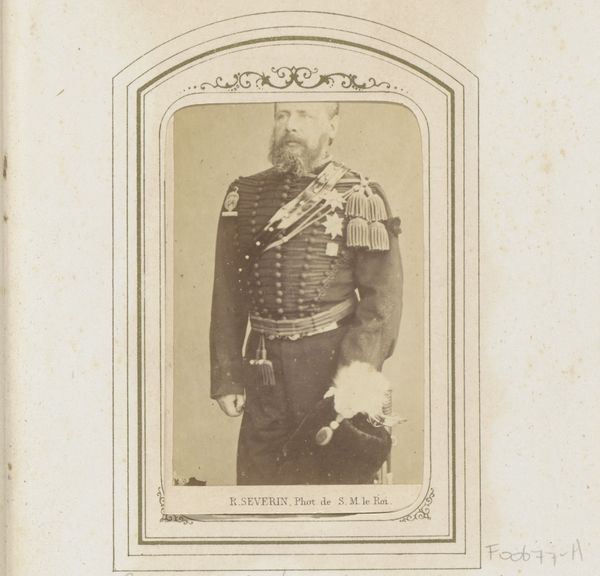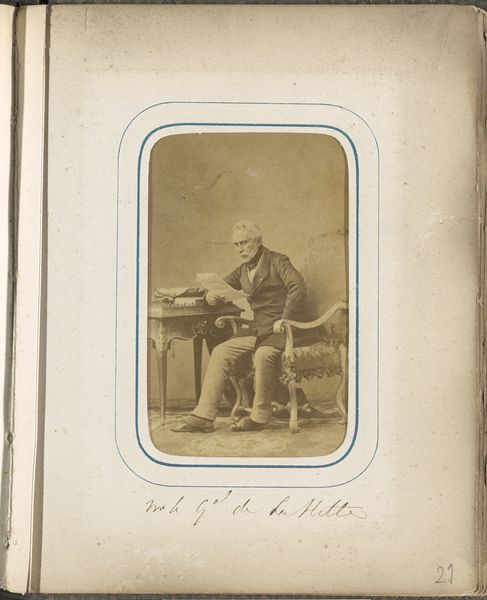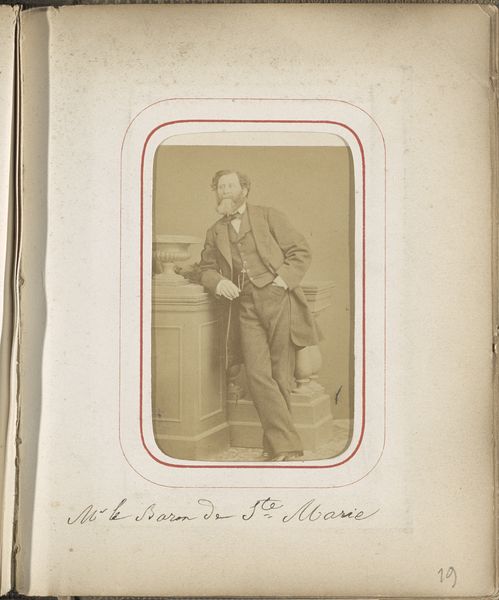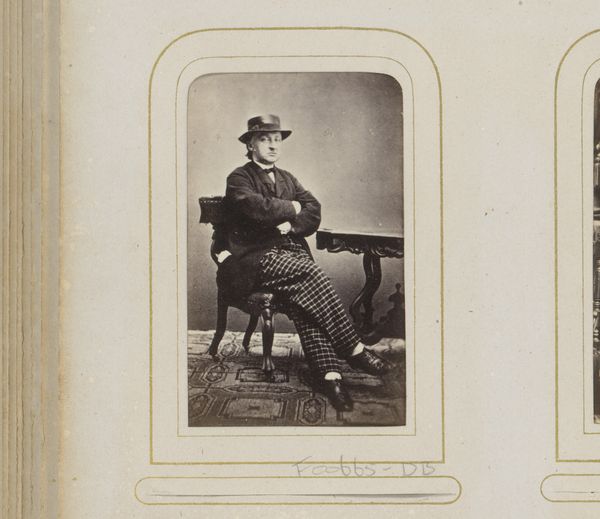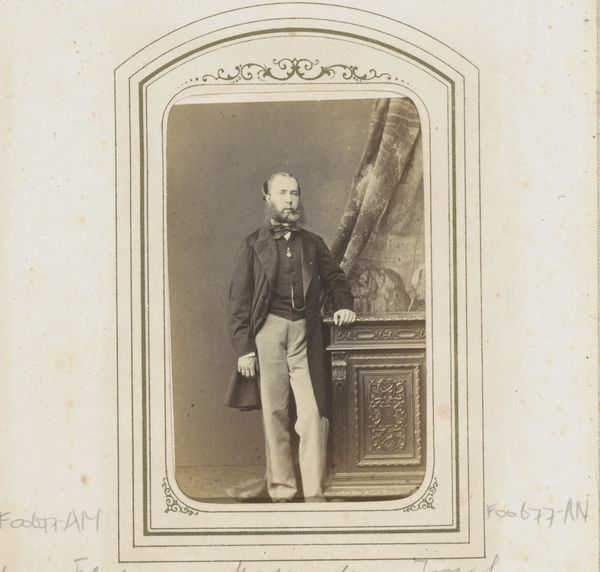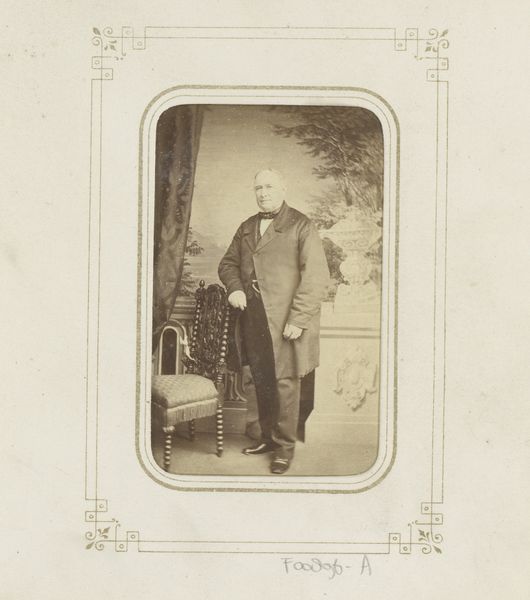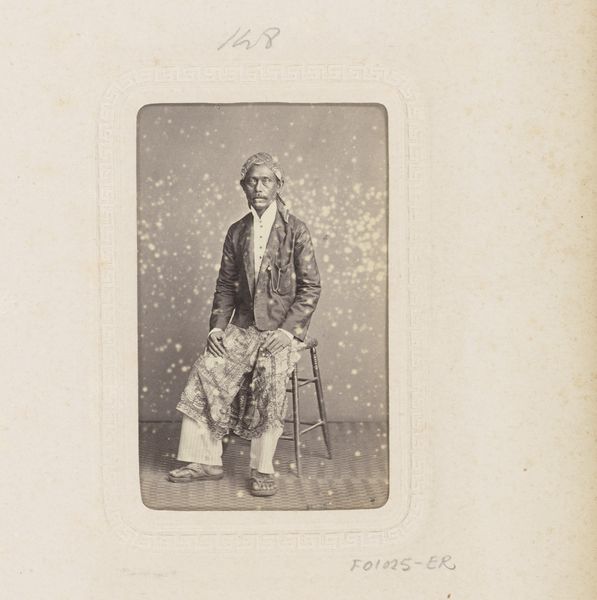
photography, albumen-print
#
portrait
#
toned paper
#
16_19th-century
#
photography
#
historical fashion
#
19th century
#
albumen-print
Dimensions: height 99 mm, width 61 mm
Copyright: Rijks Museum: Open Domain
Curator: Here we have "Portret van generaal graaf De la Rue," a portrait made by Mayer & Pierson, dating back to about 1860 to 1865. It's an albumen print, a type of photography common in the 19th century. Editor: There’s a quiet strength about this portrait, wouldn't you say? The tones of the print itself lend a certain gravity to the image of the general. And you can see a masterful control over the materials, how the light and shadow emphasize his face and uniform. Curator: Indeed. It’s hard to separate the image from its historical context. This was a period of considerable social and political upheaval, not just in Europe, but globally. How does his pose and attire serve as markers of power, especially within a militaristic framework? The military uniform, down to its construction, speaks to a highly regulated system. Editor: Exactly, the uniform *is* the art, in a sense. Consider the labor involved—the precise tailoring, the materials sourced, the societal pressures for standardization versus individual flair. The gold braids and embellishments aren't merely decorative, they're products of industry. Someone made them. The value and quality were surely linked to the value placed on military service itself. Curator: I agree. And who has access to it; what it means in terms of societal identity to belong to this elite circle is very pertinent. Thinking about the artistic intervention, we need to understand that representation, image-making, in itself, especially photographic portraiture in this period was tied to the consolidation and demonstration of power. Editor: Precisely! The ability to *own* this likeness was still relatively exclusive, it’s worth contemplating the interplay between art as documentation, and as propaganda. How does De la Rue want to be remembered and who is intended to consume his representation? Curator: Thinking about his story, placing him within the narratives of military authority during this epoch allows us a vital means to analyze themes of colonialism, and nationalism. What’s the purpose of displaying, distributing these images and who is the audience of De la Rue's portrait? Editor: A key point to reflect on the context surrounding the materials of photographic prints like this, which allow us to decode more. How they functioned as tools of visual rhetoric to project wealth, dominance and societal class. Curator: So, as we analyze how an image communicates societal standards in history, that image is also, quite literally, materially produced. Editor: An essential insight that makes us reflect on the complex narratives involved.
Comments
No comments
Be the first to comment and join the conversation on the ultimate creative platform.

